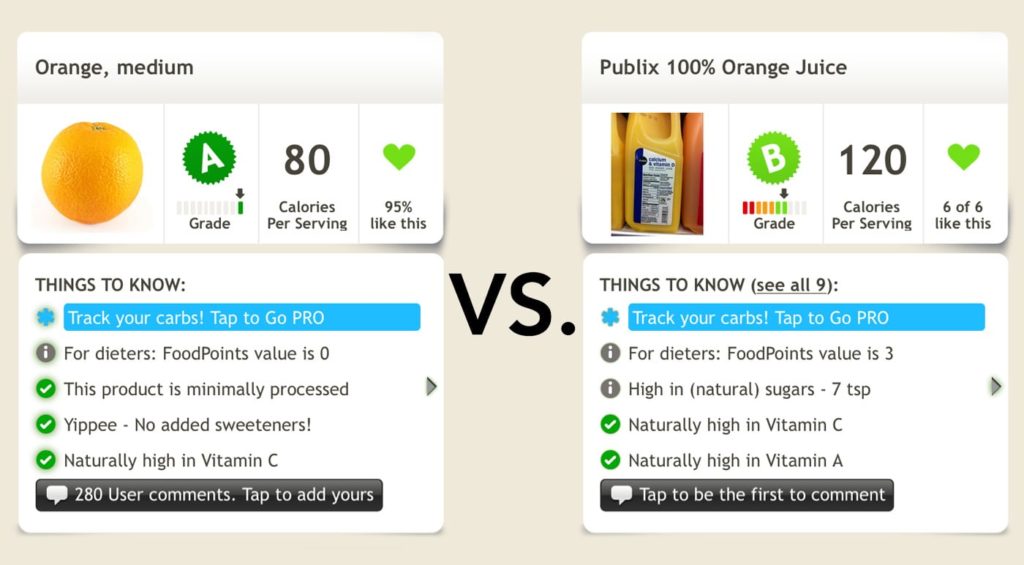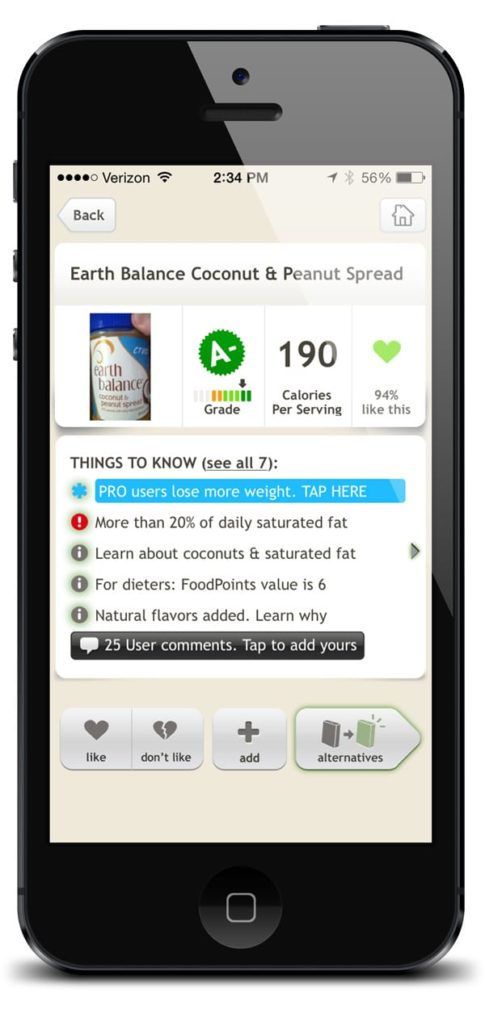Encourage Employees to “Eat a Bit Better” With Fooducate
By Hannah Ferris
Published June 11, 2014

43,844.
That is the average number of items carried in your local supermarket.
Knowing that number, I would say willpower isn’t your employees’ problem when it comes to making the wrong food choices in the grocery store.
Being overwhelmed with choices and not knowing the right choices to make is the real enemy to the success of your wellness program.
Enter Fooducate.
Fooducate.com is a website designed to help users make the healthiest choices at the supermarket.
Their mobile app is even cooler because it allows you to scan food items as you wander the aisles in Publix!
If you aren’t already using a tool like this as a part of your company wellness program, you should encourage your employees to try Fooducate. It’s user-friendly and free for basic services like the calorie counter, browsing products, and daily nutrition tips.
The Backstory on Fooducate
Fooducate was started by a California dad who was concerned about what his kids would be consuming in the age of processed foods. His independent effort to learn more about nutrition became his passion.
He created a team of professionals to begin Fooducate to help enlighten other Americans concerned about what they’re eating.
The Grading System
Fooducate is known for “grading” food products.
Their grading system is based on only the nutrition facts labels and the ingredients list of packaged products. This system gives higher grades to products that have high nutritional value and few laboratory manufactured ingredients. Nutrients that are frowned upon are things like sodium and sugar, and ingredients that are frowned upon are artificial food dyes and some preservatives.
When you search for a product or scan a physical product’s bar code on the app, Fooducate retrieves its grade and highlights which nutrients or ingredients are unhealthy.
Take for example the difference in ratings between a fresh orange and a glass of orange juice. An orange gets an A because it is naturally high in Vitamin C and is minimally processed. But a glass of Publix brand orange juice gets a B because you lose some of the natural nutrients of the orange in the juice making process.
Fooducate in Action
I used the Fooducate iPhone app to make sure that the items in our office’s healthy snack drawer are indeed healthy. As it turns out, we’re eating pretty well at The Bailey Group!
Fooducate.com has additional features that many will find useful. These include:
1. A blog with recipes, testimonials and food-related news stories;
2. Information on popular dishes served at chain and fast food restaurants; and
3. Daily nutrition tips.
The site has been applauded by many wellness media sources, like Shape Magazine, for its unbiased categorization of nutrition facts and ingredient lists.
How Fooducate Can Add to Your Wellness Program
There are many ways that Fooducate can help your wellness program’s participants. Fooducate can be personalized to help each of your employees meet their nutrition goals.
Such goals may be as basic as weight loss. There is a calorie tracker feature on both the website and the app. But Fooducate is also a good resource for more specific consumption patterns. It will suggest you avoid certain foods if you are gluten-free, conscious about GMOs, or just curious!
Wellness programs have been proven to increase employees’ productivity and workplace happiness. One of the most important factors to consider when implementing an employee wellness program is that each employee has different needs.
Fooducate is a great service to recommend for exactly this reason. It can help improve both the basic and advanced nutrition issues your employees face. Not to mention, it’s free to use Fooducate, and everyone loves free things!
Visit the Fooducate’s website | Download the Fooducate iPhone app | Download the Fooducate Android app
Hannah Ferris was a past intern at the Bailey Group. Her interests in social policy and public health yield unique insights into health care reform. Ferris entered the MSc Social Policy and Development program at the London School of Economics in 2014. She loves traveling, fashion, and writing her own personal blog, "Hannah's Happenings."






